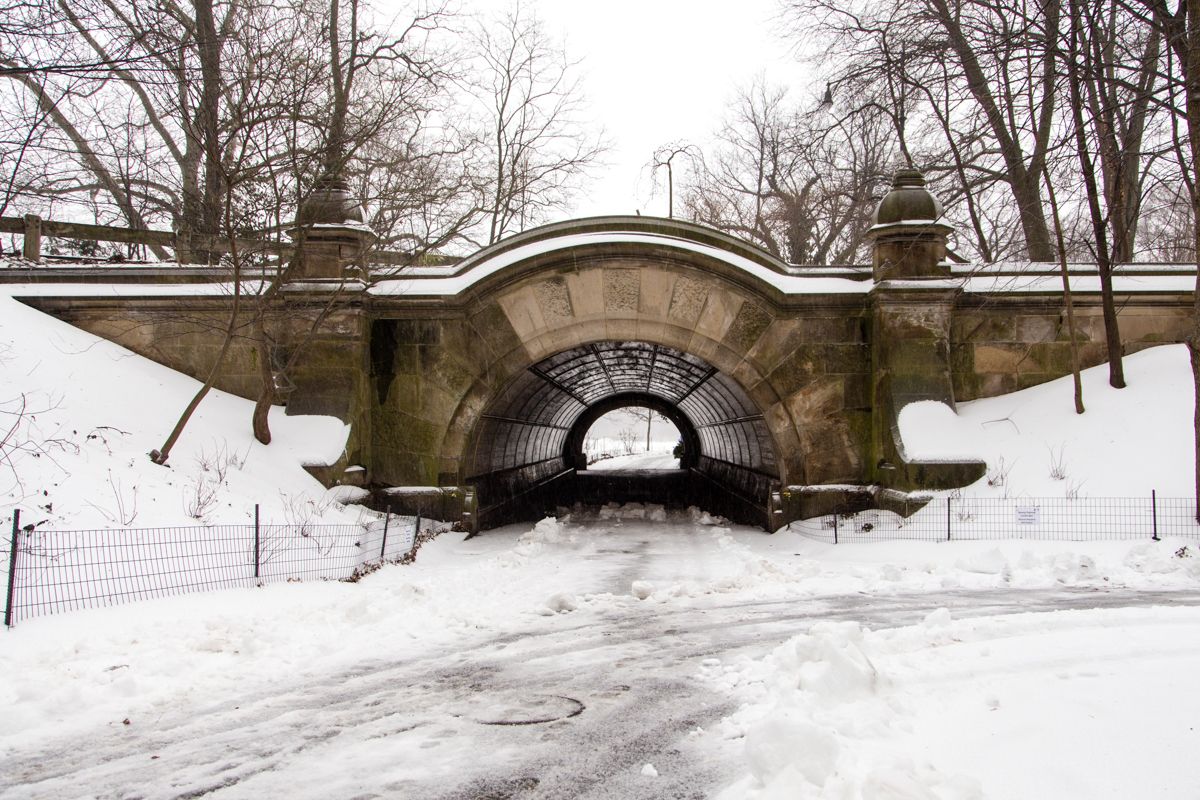Prospect Park Turns 150!


Happy anniversary, Prospect Park! Brooklyn’s public backyard turns 150 this year.
To celebrate this milestone, the Prospect Park Alliance is hosting an array of activities starting on Friday, March 31, with the return of Lola Star’s Roller Disco party (ice skating edition) to the LeFrak Center at Lakeside.
April 1 & 2 will be packed with an opening day parade and fair, an old-timey exhibition baseball game played using 1860s rules, walking and running tours, and the first Smorgasburg of the spring season.
Click here for the full schedule of special events and check out a brief history of the park below.
After landscape architects Frederick Law Olmsted and Calvert Vaux unveiled Central Park in 1857, community leaders in Brooklyn decided that they wanted a public park of their own.
James S.T. Stranahan, a businessman and prominent Brooklynite, was appointed head of the Brooklyn Parks Commissioners to oversee development of Brooklyn’s bucolic retreat.

In the early 1860s, Stranahan declared that a park in Brooklyn “would become a favorite resort for all classes of our community, enabling thousands to enjoy pure air, with healthful exercise, at all seasons of the year.”
Engineer/architect Egbert L. Viele—who was originally selected to plan Central Park, but ended up losing out on that project to the team of Olmsted and Vaux—was chosen in 1860 to design the Brooklyn park which he planned to call Mount Prospect.
Viele selected a large expanse of land including “Prospect Hill” where the Brooklyn Public Library, Brooklyn Botanic Garden, and Brooklyn Museum are now located. Land was purchased for Viele’s plan, but the Civil War began bringing his project to a halt, and Viele began serving as a Union Brigadier General.

During the hiatus, Stranahan and the park committee had the opportunity to reconsider Viele’s plan and asked Olmsted and Vaux to propose their own design for the park. Impressed with what they saw, Stranahan and his team opted for Olmsted and Vaux who once again pulled a project out from under poor Viele.
Olmsted, Vaux & Company were officially hired in 1866 to transform 585 acres of forest and rocky farmland into a lush, public greenspace including the 90-acre Long Meadow, the woodland Ravine, walkways, scenic lookouts, and a 60-acre Lake.
Though construction would continue for another seven years, Prospect Park officially opened to the public in 1867. An 1868 report noted that in July alone the unfinished park had welcomed more than 100,000 visitors.

Starting in 1898 and through the next 30 years, the architectural firm of McKim, Mead and White embellished the Park’s major entrances with Greek- and Roman-inspired columns and sculpture. The architect John Duncan contributed the Soldiers’ and Sailors’ Memorial Arch at Grand Army Plaza in 1892, and Helmle, Huberty and Hudswell designed the Beaux Arts-style Boathouse in 1905.

City planner and “master builder” Robert Moses served as a Parks Commissioner for 36 years. He created the Prospect Park Zoo in 1935, new playgrounds, and oversaw the construction of the Bandshell. In 1961, he introduced the Kate Wollman Memorial Skating Rink—now the LeFrak Center at Lakeside.
During the 1970s, New York City fell on financial hard times and the park suffered from neglect. By 1979 the number of visitors had significantly dropped to 2 million visits a year—the lowest in the Park’s history. In a symbolic moment, the bronze sculpture of Columbia at Grand Army Plaza literally toppled over in her chariot.
Locals began lobbying for proper upkeep of the Park. The Brooklyn Borough President at the time, Howard Golden, teamed up with Mayor Ed Koch and Parks Commissioner Gordon Davis to devise a plan to restore the crumbling Park. In 1980, they appointed Tupper Thomas, the first Prospect Park Administrator, to oversee the restoration project.
In 1987, a group of citizens formed the Prospect Park Alliance to work with Thomas and the City in restoring Prospect Park. The first project on their agenda was to repair the broken-down Carousel from 1912.

In the 90’s, the Alliance oversaw a $9 million woodlands restoration project that included more than 3,500 cubic yards of topsoil to stabilize slopes, the addition of 160,000 plants, and the excavation of 12,000 cubic yards of sediment from pools and streams.

To maintain a healthy ecosystem, plants were locally sourced within 60 miles of the Park, and over 30,000 aquatic plants were added for the wildlife residents. Even the boulders, 2,000 of them, were identified and replaced, and bridges were renovated to their original Adirondack style using white oak and steel frames.
In the late 2000s the Alliance began to focus on the restoration of the Park’s southeast corner, which included a much-needed update to the Kate Wollman Skating Rink. The new LeFrak Center at Lakeside offers ice skating in the winter and roller skating in the warmer months as well as a water park in the summer. The $74 million project also included the restoration Baier Music Island and the White Levy Esplanade.

150 years since its introduction, the Park welcomes 10 million visits annually, fulfilling Stranahan’s vision that Prospect Park would become a popular retreat for all.
Click here to see some historic photos and here for 10 fun facts about Prospect Park.




